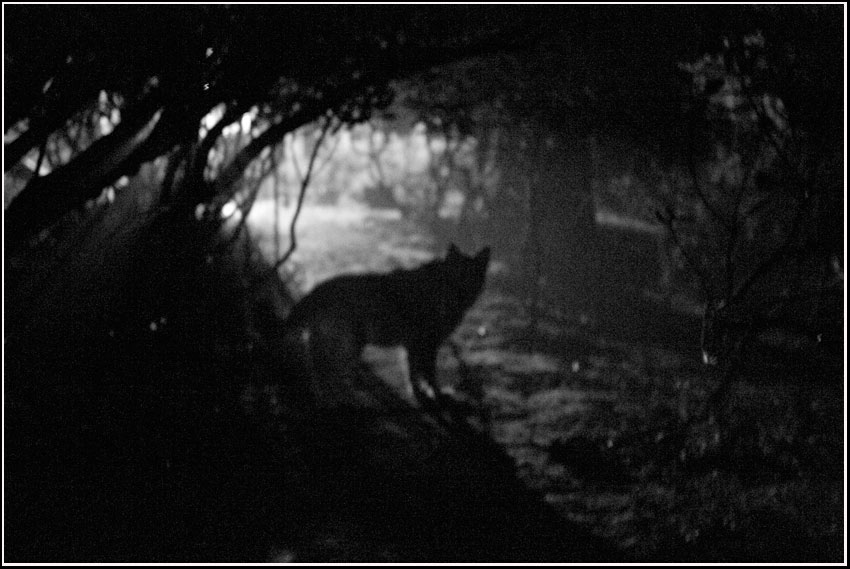
Charlottesville Planning Commission and City Council have a joint public hearing tomorrow night regarding updating the Critical Slopes ordinance. A unique opportunity for members of the public (Developers and residents) to weigh in on what our City will look like ten years down the road.
If you are a player of meeting bingo, the sustainability box will be filled in early.
Category: environment
Arbor Day
“A society grows great when old people plant trees whose shade they know they shall never sit in.”

Members of the Charlottesville Area Tree Stewards, the Charlottesville Tree Commission, Charlottesville Parks and Recreation and Mia the Dog planted a quercus bicolor in Tonsler Park this morning celebrating Arbor Day.
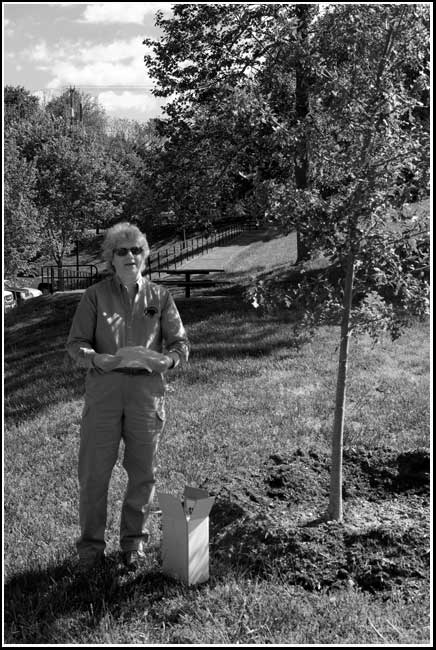 Martha Warring, forester with the VDOF addressed the assembly, marking Charlottesville’s 5th year as a “tree-city”, a citation granted by the Arbor Day Foundation.
Martha Warring, forester with the VDOF addressed the assembly, marking Charlottesville’s 5th year as a “tree-city”, a citation granted by the Arbor Day Foundation.

Trees start small, they get big. This quercus falcata (Southern Red Oak) is located in the City’s Oakwood Cemetery.
If you have a tree you’d like to nominate for the Charlottesville Area Tree Stewards “treasured tree” program contact them.
South of the Tracks
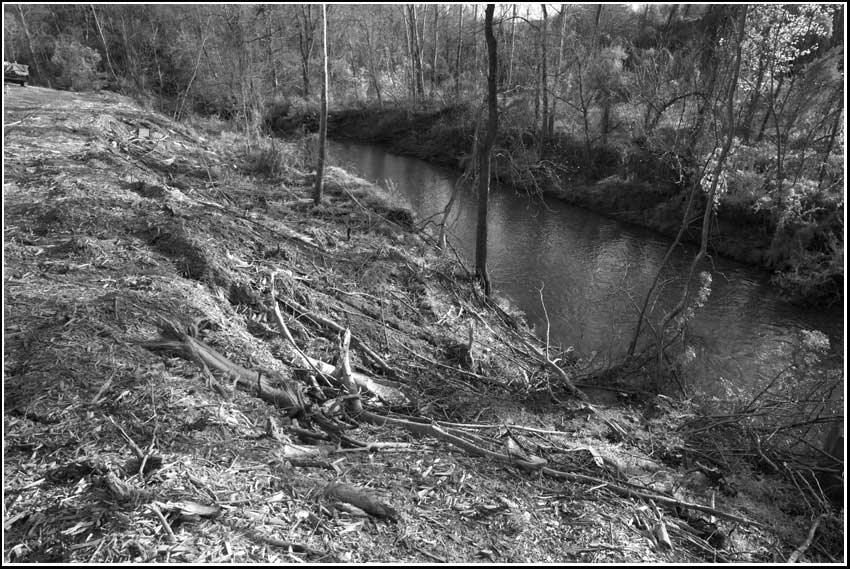
Sec. 10-71. Duty to retain or establish stream buffer.
(a) Except as otherwise provided in this article, any land adjacent to the following listed waters, shall provide buffers for the purposes of retarding runoff, preventing erosion, and filtering nonpoint source pollution from runoff:
(1) Rivanna River;
(2) Moore’s Creek;
(3) Meadow Creek.
(b) A required stream buffer shall be no less than one hundred (100) feet wide on each side of the stream, which buffer
shall be measured horizontally from the top of the stream bank.–CHO Minicode
North of the tracks we are spending millions to restore Meadow Creek. South of the tracks, on Moore’s Creek, the poor man’s creek, is there a mitigation plan, any plan? Put in the new sewer pipe, grind up the trees. That is that?
e&s
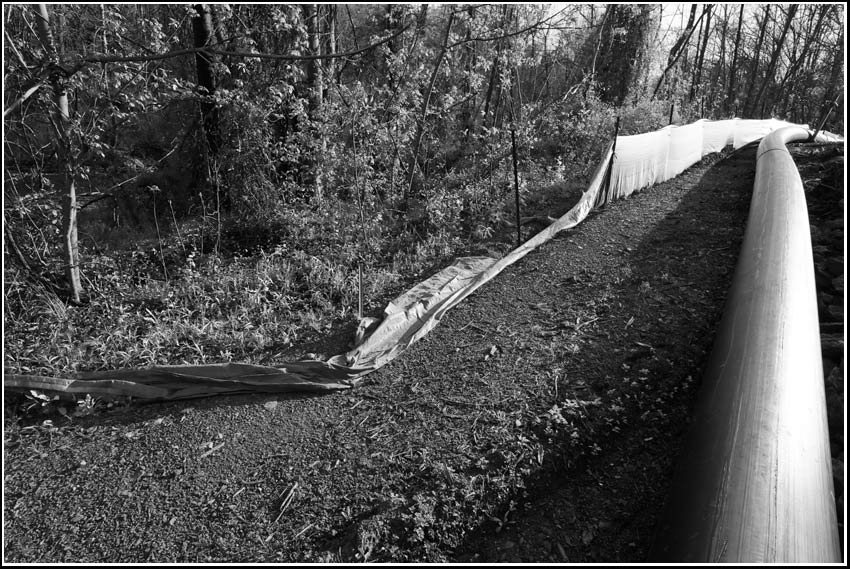
Erosion and sedimentation controls, Moore’s Creek.
I wonder what the run-off volume from this project into the creek was last weekend?
high voltage
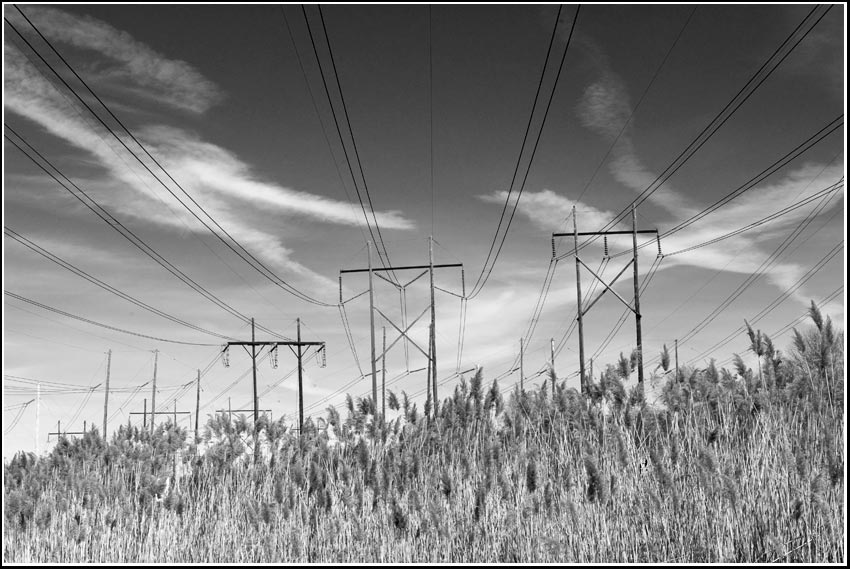
Transmission lines from the Brayton Point power plant where they cross I-195, west of Fall River
closed cycle cooling system
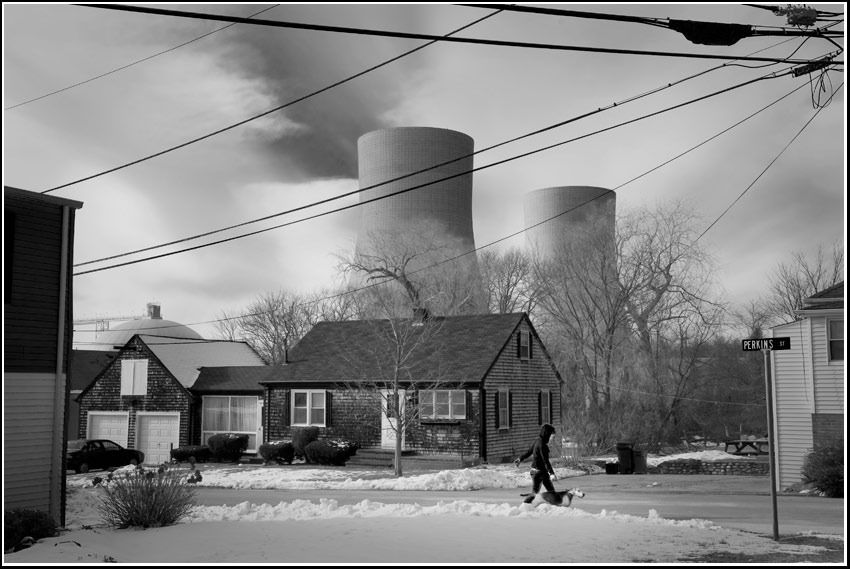
The Brayton Point Station power plant, located on the shores of Mount Hope Bay, is the largest fossil-fuel burning power plant in New England.
Jack Aubrey would be proud
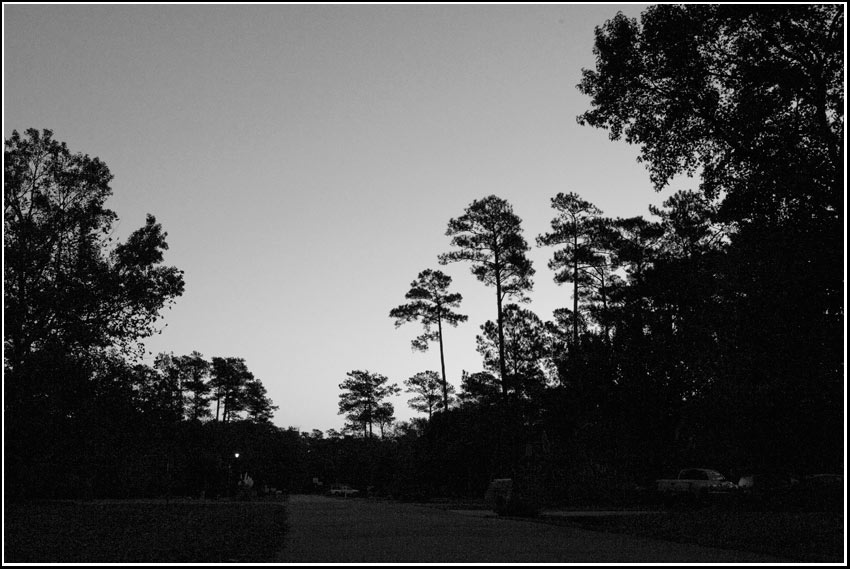
Dawn on the cul de sac. No traffic. Leaving at 700hrs for Charlottesville.

Tonight the Charlottesville Planning Commission continues their discussion regarding the protection of critical slopes and green infrastructure. The health of the Rivanna River watershed and its inhabitants is affected by this discussion. Consider attending, the discussion will be in a “workshop” format, public input is encouraged.
Fort Macon, Cow Island, Terns?
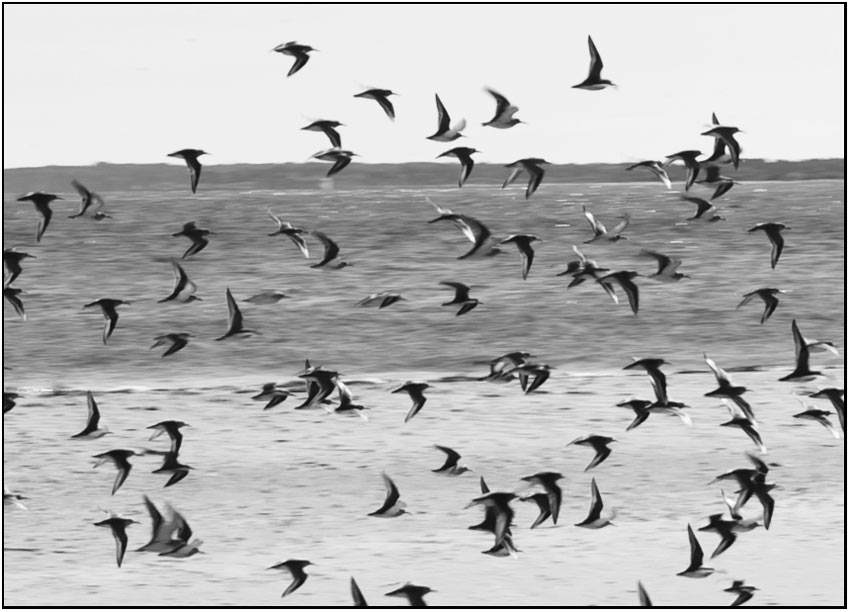
1/400th of a second and their wings still blur.
Communicate with Virginia and the EPA about the waters of Virginia with this form letter, courtesy of the Chesapeake Bay Foundation.
The EPA’s public comment period for the draft Chesapeake Bay TMDL closes in thirteen hours (Midnight, November 8). Virginia’s comment period closes November 11.
The water above, Beaufort Inlet Channel, NC.
Driving later today to Emory’s promotion at Cherry Point MCAS.
State Water Control Law
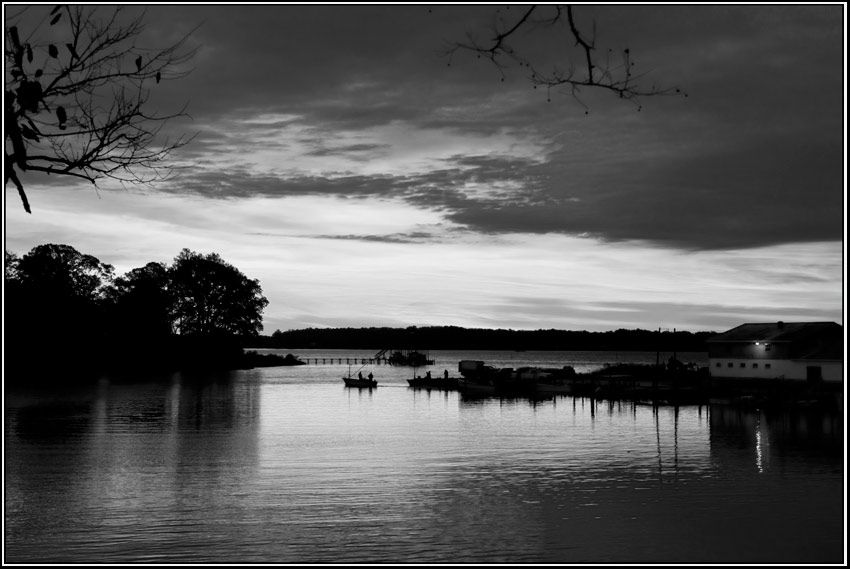
It seems harsh to say that political leaders don’t give a rip about the quality of our physical environment. But how else can you explain the condition of Virginia’s streams and rivers?
In 1950, the Virginia General Assembly added the Water Control Law to the State Code.
The short title of this chapter is the State Water Control Law. It is the policy of the Commonwealth of Virginia and the purpose of this law to:
(1) protect existing high quality state waters and restore all other state waters to such condition of quality that any such waters will permit all reasonable public uses and will support the propagation and growth of all aquatic life, including game fish, which might reasonably be expected to inhabit them;
(2) safeguard the clean waters of the Commonwealth from pollution;
(3) prevent any increase in pollution;
(4) reduce existing pollution;
(5) promote and encourage the reclamation and reuse of wastewater in a manner protective of the environment and public health; and
(6) promote water resource conservation, management and distribution, and encourage water consumption reduction in order to provide for the health, safety, and welfare of the present and future citizens of the Commonwealth.
Communicate with Virginia and the EPA about the waters of Virginia with this form letter, courtesy of the Chesapeake Bay Foundation.
The public comment period ends November 8 (EPA) and November 11 (Commonwealth of Virginia).
trickle down

I am keeping a list of our home-grown Cassandras, that valiant bunch with a knack for prophecy, citizens looking a few months ahead.
With one exception (Charlottesville Tomorrow), local media have shown little interest in this acronym laced, Chesapeake Bay “environmental” story. TMDLs, WIPs. Ho-Hum. Complicated. Who cares?
The information is beginning infiltrate into politicians’ craniums via multiple public meetings where the Cassandras stand up and sing. Government staff “get” the import of pending events, but until voters shriek and wail, no action will be seen from elected leaders.
For citizens wishing to weigh in, write a letter to the Virginia Department of Conservation and Recreation
Ask the DCR to craft a Watershed Implementation Plan that “gets it done”. The WIP must provide the EPA with details, legislative proposals, reasonable assurance…
The public comment period for the draft Virginia Watershed Implementation Plan closes a week from today.
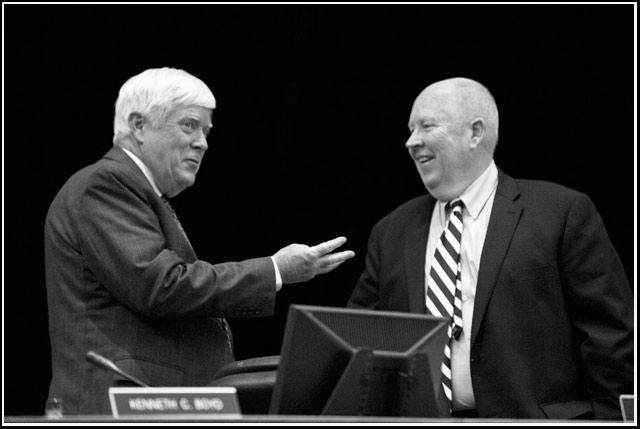
(Notes: audio clip is CHO Planning Commission Chairman Jason Pearson at that body’s October 12, 2010 meeting. Water up top, Rappahannock River, politicians, Albemarle County Board of Supervisors Ken Boyd and Duane Snow.)